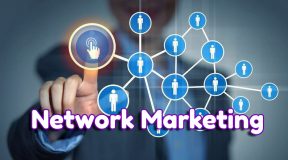Introduction
Marketing is the driving force behind business growth, bridging the gap between a company and its customers. It is a dynamic discipline that combines creativity, analytics, and strategy to promote products, services, or ideas effectively. With the rapid evolution of technology, marketing has transformed from traditional methods like print ads and direct mail to a sophisticated digital ecosystem involving social media, search engines, and content-driven campaigns. Understanding the full spectrum of marketing strategies and their practical applications is essential for businesses seeking to thrive in a competitive landscape.
The Evolution of Marketing
Marketing has undergone a significant transformation over the past century. Early marketing focused primarily on product promotion and basic advertising techniques. As markets grew more competitive, businesses adopted the marketing mix concept, emphasizing product, price, place, and promotion to create a balanced approach.
The rise of the internet and digital platforms revolutionized marketing once again. Digital marketing introduced precision targeting, analytics, and automation, allowing brands to engage consumers more effectively. Today, modern marketing is highly customer-centric, focusing on delivering personalized experiences and measurable results.
Key Marketing Strategies
- Content Marketing
Content marketing is the practice of creating and distributing valuable, relevant content to attract and retain a clearly defined audience. This strategy focuses on building trust and authority rather than direct selling. Common formats include:
- Blog posts and articles
- E-books and whitepapers
- Video content and webinars
- Infographics and podcasts
The primary goal is to educate and engage consumers, nurturing long-term relationships that can lead to conversions and brand loyalty.
- Social Media Marketing
Social media marketing leverages platforms like Facebook, Instagram, LinkedIn, TikTok, and Twitter to promote products and connect with audiences. Key benefits include:
- Direct engagement with consumers
- Real-time feedback and community building
- Targeted advertising using demographic and behavioral data
- Amplification of brand messages through shares and interactions
Successful social media marketing requires a clear content strategy, consistency in posting, and a deep understanding of each platform’s unique audience.
- Search Engine Optimization (SEO)
SEO involves optimizing a website and its content to rank higher in search engine results pages (SERPs). This strategy drives organic traffic and improves visibility without relying on paid advertisements. Important aspects of SEO include:
- Keyword research and placement
- On-page optimization (meta titles, descriptions, headings)
- High-quality backlinks
- Technical SEO, including website speed, mobile responsiveness, and structured data
Businesses that invest in SEO can achieve sustainable growth by attracting users actively searching for their products or services.
- Email Marketing
Email marketing remains one of the most effective tools for direct communication with potential and existing customers. Key components include:
- Personalized content tailored to audience segments
- Automated email campaigns based on user behavior
- Newsletters providing updates, promotions, and educational content
- Performance tracking to optimize open rates and conversions
When executed well, email marketing nurtures leads, increases customer retention, and drives repeat sales.
- Influencer Marketing
Influencer marketing involves collaborating with individuals who have a large, engaged following to promote products or services. Benefits include:
- Enhanced brand credibility and trust
- Access to highly targeted audiences
- Creative content that resonates with followers
- Measurable ROI through trackable campaigns
Micro-influencers, in particular, often deliver higher engagement rates due to their niche audiences and perceived authenticity.
- Pay-Per-Click Advertising (PPC)
PPC advertising is a model where businesses pay each time a user clicks on their ad. Platforms like Google Ads and social media networks allow for precise targeting. Benefits include:
- Immediate visibility on search engines and platforms
- Budget control and measurable ROI
- Flexibility to test different ad creatives and messaging
- Integration with retargeting campaigns for higher conversions
PPC works best when combined with SEO and content marketing to cover both short-term and long-term marketing objectives.
- Branding and Positioning
Branding involves creating a unique identity that differentiates a business from competitors. Effective branding builds emotional connections with customers and fosters loyalty. Core elements include:
- Logo and visual identity
- Brand voice and messaging
- Value propositions and unique selling points (USPs)
- Consistency across all marketing channels
Positioning ensures that a brand occupies a distinct place in the consumer’s mind, shaping perceptions and influencing purchase decisions.
Modern Marketing Trends
- Artificial Intelligence and Automation
AI-driven marketing tools automate repetitive tasks, provide actionable insights, and enhance personalization. Examples include chatbots, recommendation engines, predictive analytics, and automated content generation. - Video Marketing Dominance
Video content has become the preferred medium for consumer engagement. Short-form videos on platforms like TikTok and Instagram Reels, along with long-form tutorials on YouTube, help brands communicate effectively and improve retention rates. - Voice Search Optimization
With the rise of smart devices and voice assistants, optimizing content for voice search is essential. Marketers are focusing on conversational keywords and FAQ-style content to match how users speak. - Sustainability and Purpose-Driven Marketing
Consumers increasingly value brands that align with their social and environmental values. Purpose-driven marketing highlights a brand’s commitment to sustainability, ethical practices, and social responsibility. - Omnichannel Marketing
An integrated approach ensures a consistent brand experience across online and offline touchpoints. Combining website interactions, email, social media, physical stores, and events creates a seamless customer journey.
Measuring Marketing Success
To ensure marketing efforts are effective, businesses must track and analyze key performance indicators (KPIs). Common metrics include:
- Website traffic and session duration
- Conversion rates and lead generation
- Social media engagement (likes, shares, comments)
- Return on investment (ROI) for paid campaigns
- Customer acquisition cost (CAC) and lifetime value (CLV)
Using analytics tools and dashboards allows marketers to make data-driven decisions, optimize campaigns, and maximize results.
Challenges in Marketing
Despite its potential, marketing comes with challenges:
- Rapidly changing consumer behavior
- Increasing competition in digital spaces
- Privacy regulations affecting data collection
- Balancing creativity with analytical rigor
- Ad fatigue and declining organic reach on social platforms
Businesses that adapt quickly, embrace technology, and focus on customer experience can overcome these hurdles.
Conclusion
Marketing is no longer just about selling products—it’s about creating value, building relationships, and engaging audiences across multiple channels. A successful marketing strategy integrates content, social media, SEO, email, influencer collaborations, and paid advertising to achieve measurable results. By keeping pace with emerging trends and focusing on customer-centric approaches, businesses can enhance brand visibility, foster loyalty, and drive long-term growth.
Frequently Asked Questions (FAQs)
- What is the difference between traditional marketing and digital marketing?
Traditional marketing uses offline channels like print, radio, and TV, while digital marketing leverages online platforms such as social media, search engines, and websites. Digital marketing offers more precise targeting and measurable results. - How does content marketing help businesses grow?
Content marketing educates and engages audiences, establishes authority, and builds trust. By providing valuable information, businesses can nurture leads, increase brand awareness, and improve conversions over time. - Why is SEO important for modern businesses?
SEO improves website visibility in search results, drives organic traffic, and attracts users actively searching for related products or services. This increases the likelihood of conversions and long-term growth. - How do social media platforms impact marketing strategies?
Social media enables brands to connect directly with their audiences, share content, run targeted ads, and monitor engagement. Platforms like Instagram and LinkedIn allow for niche targeting and community-building. - What is influencer marketing, and is it effective?
Influencer marketing involves collaborating with individuals who have a strong online following to promote products. It is effective because influencers provide credibility, reach targeted audiences, and generate authentic engagement. - How can businesses measure the effectiveness of marketing campaigns?
Businesses track KPIs such as website traffic, social engagement, conversion rates, ROI, and customer lifetime value. Analytics tools help monitor performance and optimize strategies based on data-driven insights. - What are the emerging trends in marketing for 2025?
Key trends include AI-driven personalization, short-form video content, voice search optimization, purpose-driven marketing, and omnichannel strategies that ensure a consistent customer experience.
This article provides a detailed roadmap for businesses looking to strengthen their marketing efforts, adapt to modern trends, and achieve measurable results in a competitive environment.







